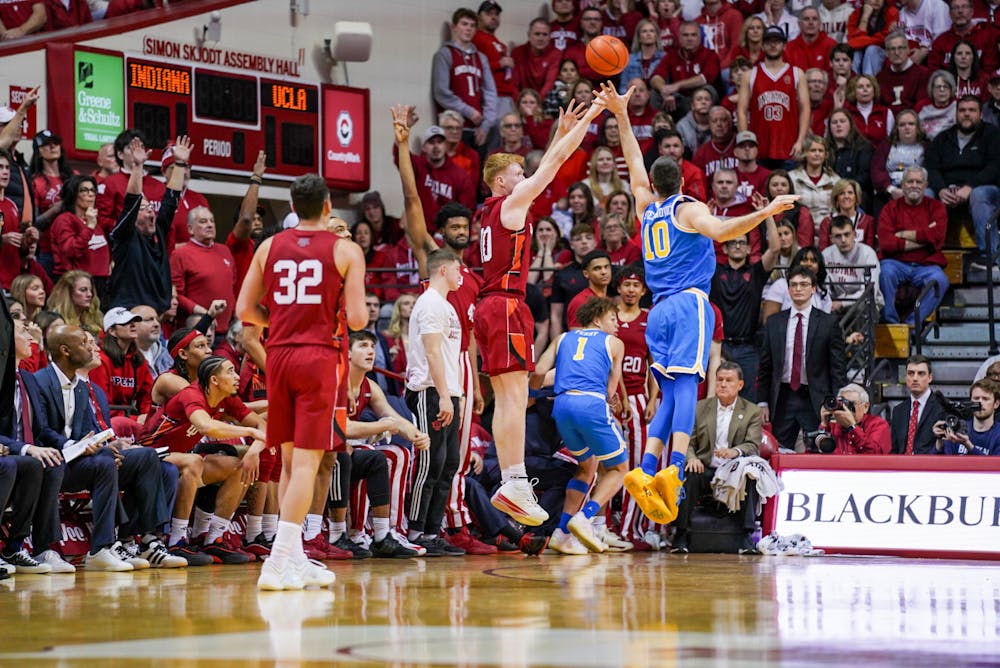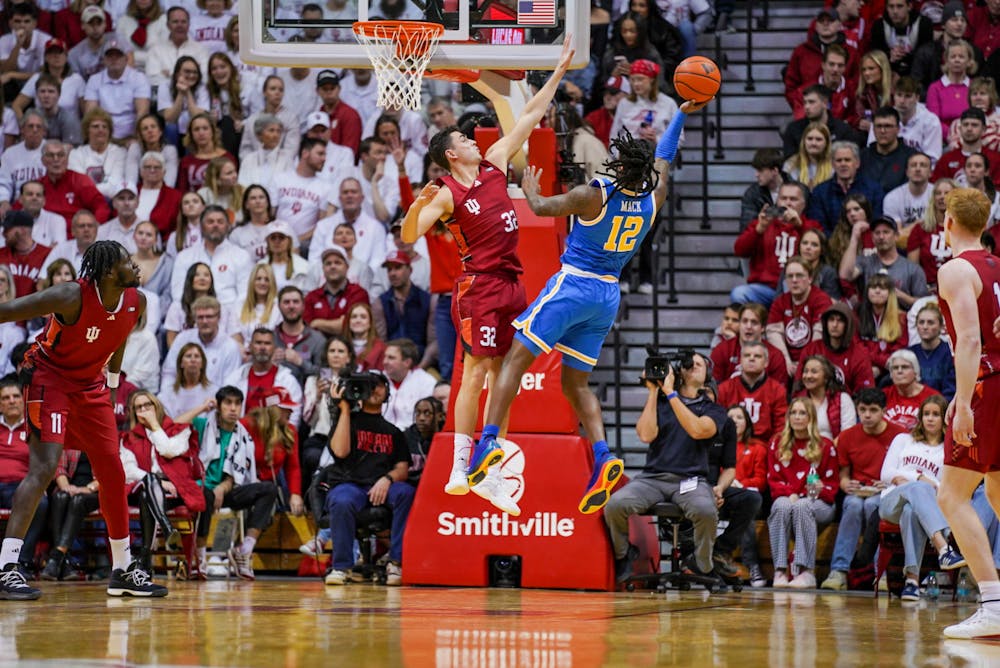For the first time in 24,884 days, Dec. 29, 1956, to be exact, the UCLA Bruins traveled to Assembly Hall.
This contest finished similarly for the Bruins as it did for coach John Wooden in his journey to Bloomington. UCLA (19-7, 10-5) used a 20-7 first half run to jump ahead and never let Indiana (15-11, 6-9) crawl completely back, winning 72-68 — their eighth victory in nine tips.
This marks UCLA’s first victory over the Hoosiers as a part of the Big Ten conference.
Indiana once again had multiple chances in front of their bench to either win or tie the game down two, and similarly to Maryland, the shots refused to rattle in. Mackenzie Mgbako overshot a point-blank putback layup before missing an uncontested corner 3 off the inbound. Two Dylan Andrew’s free throws later and a sigh of disappointment came from the Hoosier faithful.
“Mack got an offensive rebound, point-blank layup, and we don't get it. Then we get a wide open three,” Mike Woodson said in his postgame press conference. “We got exactly what we were looking for on the play, and that's a shot that he normally makes. He just didn't make it.”
Friday saw the Hoosiers drop their eighth of 10 games on the slate and fourth straight at home. This was also Indiana’s fourth loss by less than five points in the past six contests.

Indiana continued its offensive struggles once again Friday, shooting 7-for-29 from 3. Mgbako started the game strong with six points in the first 3:45, but missed the final 12:49 of the half with an ankle injury, that substitution being the start of Indiana’s stagnant offensive play. The Hoosiers would only score 15 more points and a full 7:37 without a field goal during that final stretch of the first.
The theme of second-half fights falling short once again prevailed as Indiana was able to get as close as four on two separate occasions, but the hole was too deep once again — a commonality in many losses this season.
Woodson had an interesting response when asked postgame about his team's ability to finish games down the stretch.
“I'm searching as the coach in terms of trying to get them over the finish line. I'll never put it on the player. I'll take the responsibility. Even though I don't make the shots or miss the defensive assignments, it's still my job to get them over the hump.”
Indiana also rarely used its 2-3 defensive zone against the Bruins, the main catalyst that led to their victory at Michigan State on Tuesday — a game that saw the Spartans shoot 4-for-23 from 3 and 38.2% from the field. UCLA consistently found quality spacing and unabated cuts to the rim in their offense, leading to 9-for-20 shooting from the 3.
“Again, I thought there were times it (zone) didn't help, we just didn't play it right, and they exposed us some early on, and we got away from it,” said Woodson. “I thought our rotations tonight were off based on how we played at Michigan State.”
Assembly Hall once again played host to an opposing coach whose name will be tossed around at the conclusion of the season to take over the head job in Bloomington — last Saturday being Dusty May, and Friday being Mick Cronin. Cronin, a Cincinnati, Ohio native, holds a 499-231 (.683%) record across 22 years at Murray State, Cincinnati, and UCLA. He took the Bruins to the 2020-21 Final Four where they fell to Gonzaga 93-90 in overtime.
This loss now puts Indiana and Woodson in an extremely tough position to make the NCAA postseason, a path that includes No. 7 Purdue visiting Bloomington next Sunday and a west coast two-game road trip to see Washington and Oregon in two weeks.
This team has entered the danger zone of being almost completely reliant on the Big Ten tournament to make the dance, a position that has become all too recognizable for the Indiana program.
The 2024-25 campaign is shaping up to be the fifth season out of the past seven (no 2020 tournament due to COVID-19) where Indiana is going to be excluded from the postseason. A problem that will be the sole responsibility of the next Indiana men’s basketball coach to fix.
The university has shown a clear dedication to provide the resources necessary in the modern age of college sports to be successful. The best facilities, amenities, and a high-level NIL collective will be at the disposal of the next head coach.
Just ask Curt Cignetti.





